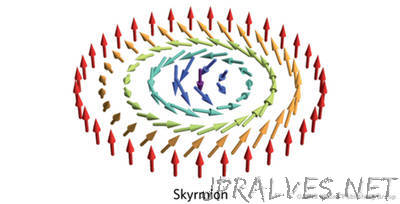
“Many people who use computers and other digital devices are aware that all the words and images displayed on their monitors boil down to a sequence of ones and zeros. But few likely appreciate what is behind those ones and zeros: microscopic arrays of “magnetic moments” (imagine tiny bar magnets with positive and negative poles). When aligned in parallel in ferromagnetic materials such as iron, these moments create patterns and streams of magnetic bits—the ones and zeros that are the lifeblood of all things digital. These magnetic bits are stable against perturbations, such as from heat, by a form of strength in numbers: any moment that inadvertently has its orientation reversed is flipped back by the magnetic interaction with the rest of the aligned moments in the bit. For decades, engineers have been able to increase computing capabilities by shrinking these magnetic domains using advances in manufacturing and novel techniques for reading and writing the data. In recent years, however, it has become clear that this approach cannot go on indefinitely. As it turns out, moments start to wobble out of alignment when the size of the bit gets too small and the interaction energy keeping them aligned is exceeded by the surrounding thermal energy making the all-important digital bits unstable and unreliable for storage or logic. For a number of high-performance electronic devices, that thermodynamic requirement for magnetic bit size—called the superparamagnetic limit—is about to be reached, meaning that eking out more memory in the same amount of space will no longer be possible. DARPA’s Topological Excitations in Electronics program, announced today, aims to investigate new ways to arrange these moments in novel geometries that are much more stable than the conventional parallel arrangement. If successful, these new configurations could enable bits of data to be made radically smaller than possible today, potentially yielding a 100-fold increase in the amount of storage achievable on a chip. It could also enable designs for completely new computer logic concepts and even for topologically protected “quantum” bits—the basis for long-sought quantum computers.”
Link to article
